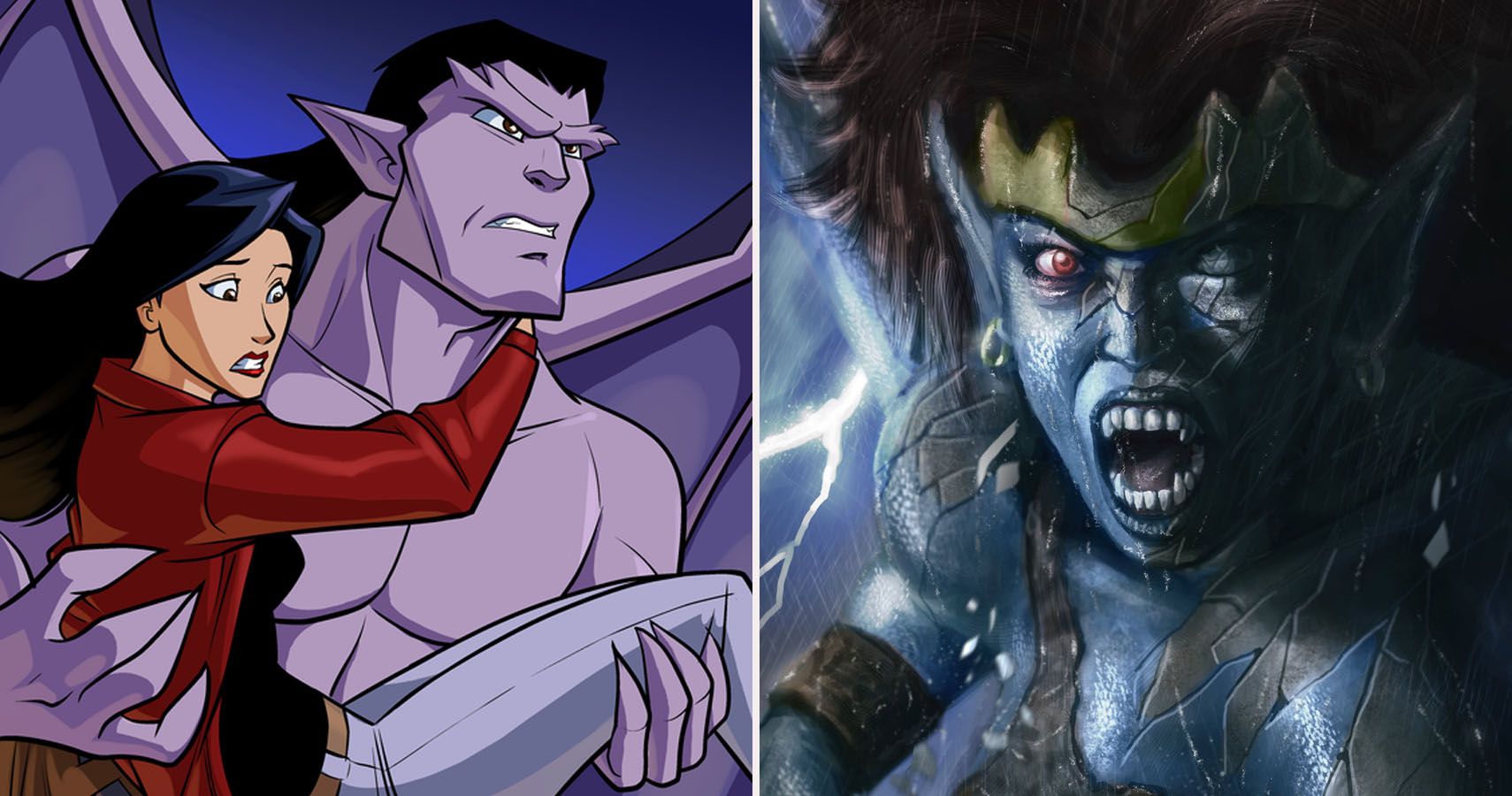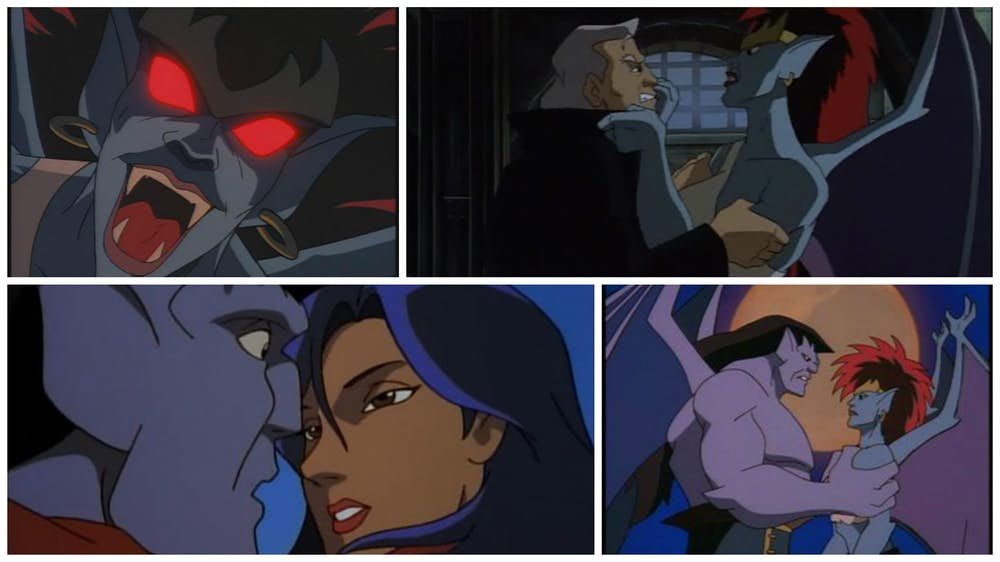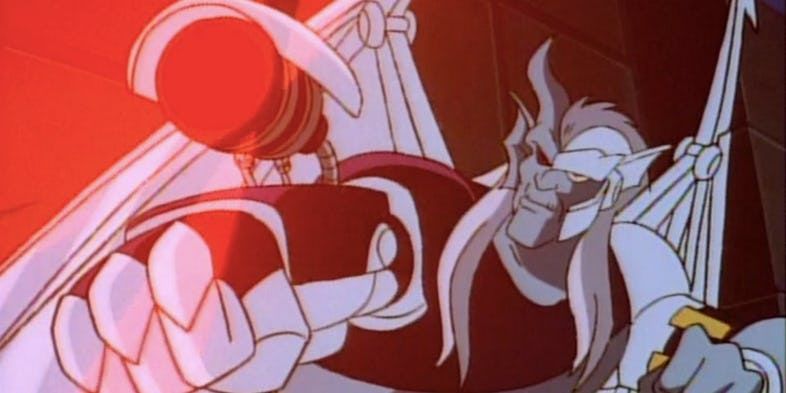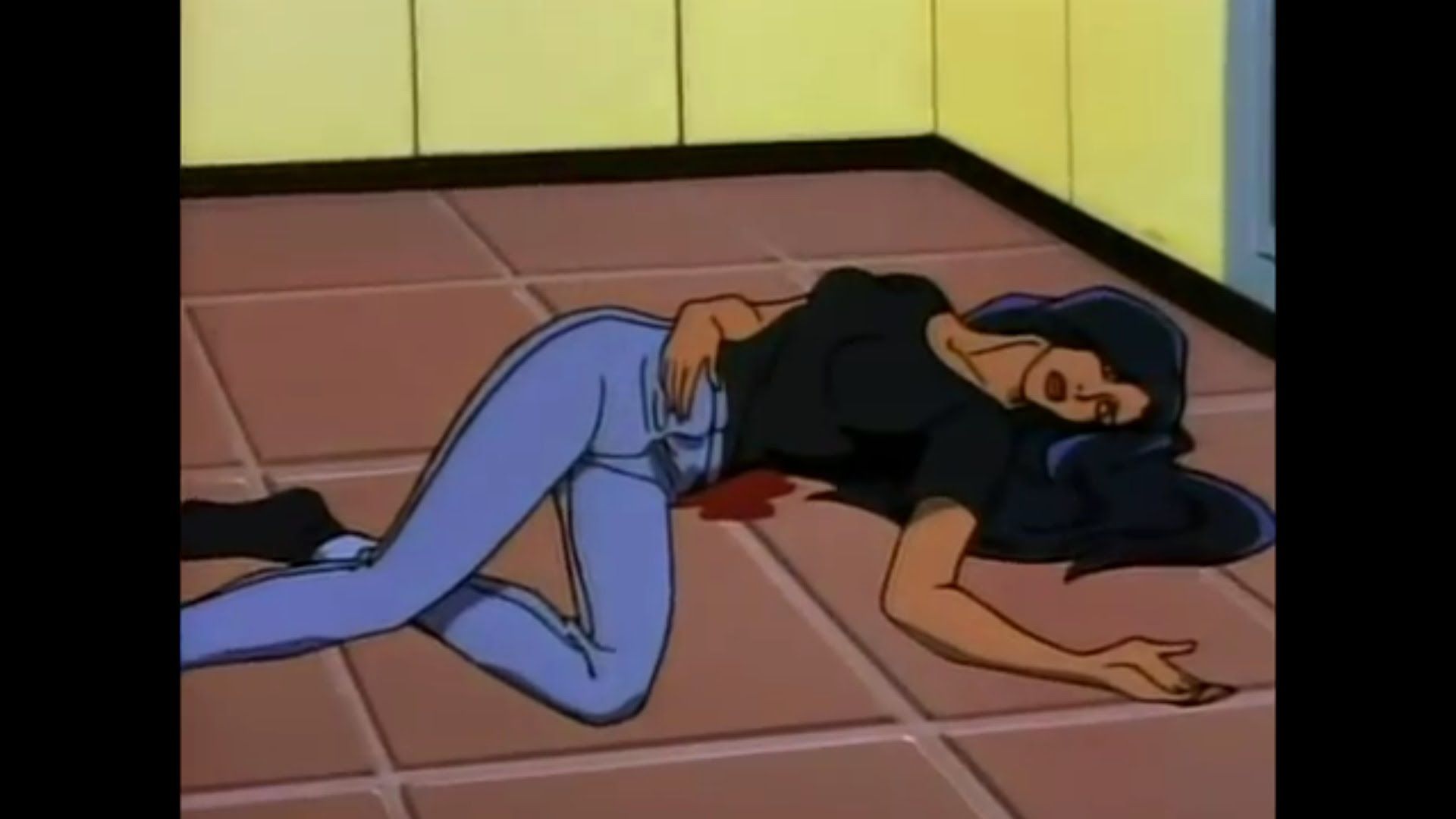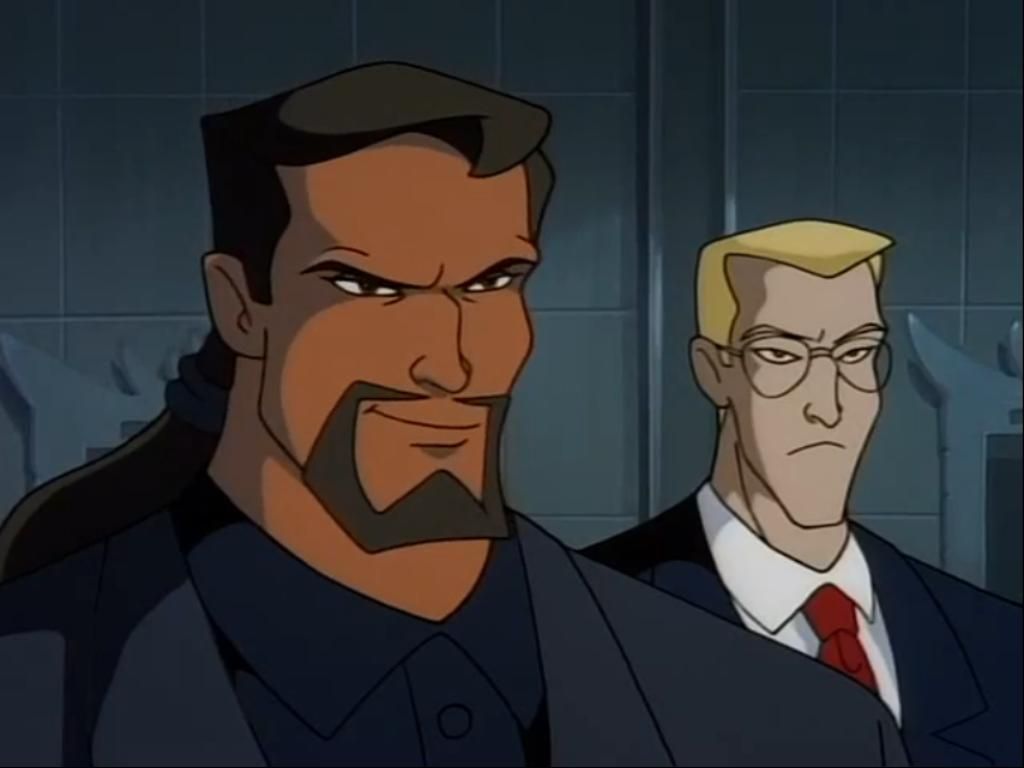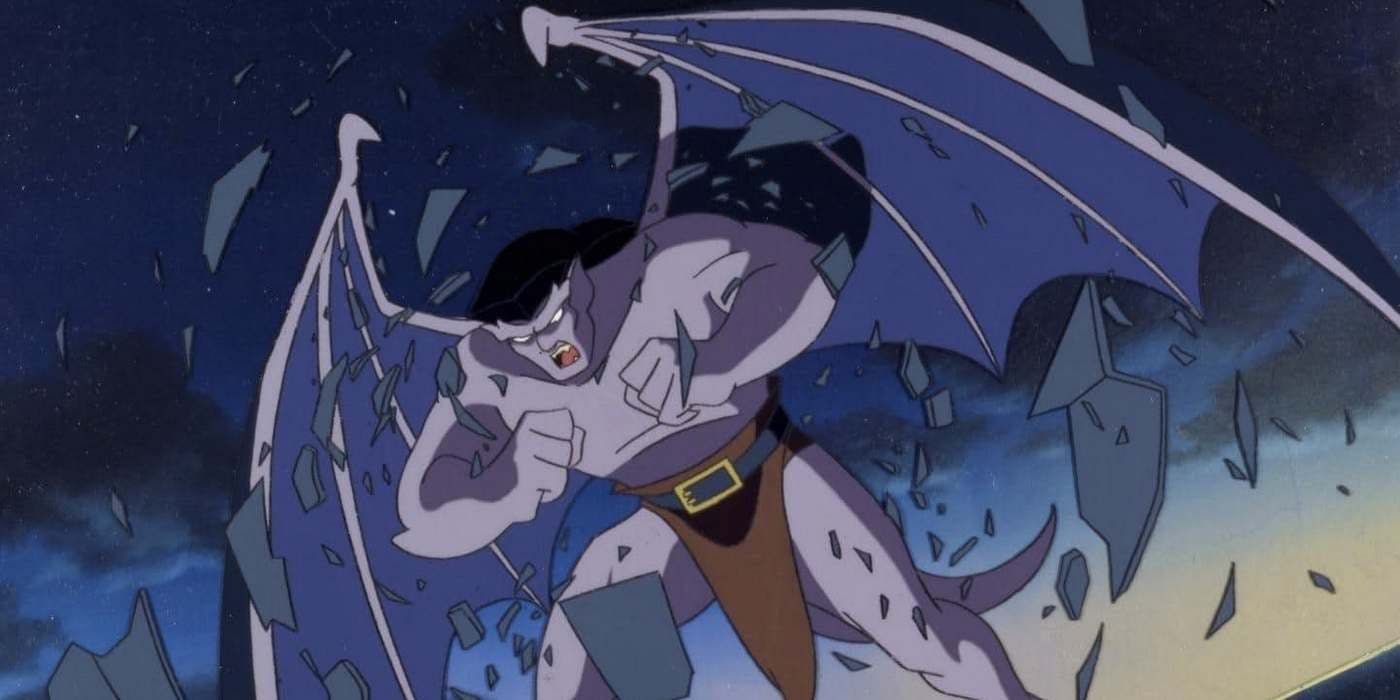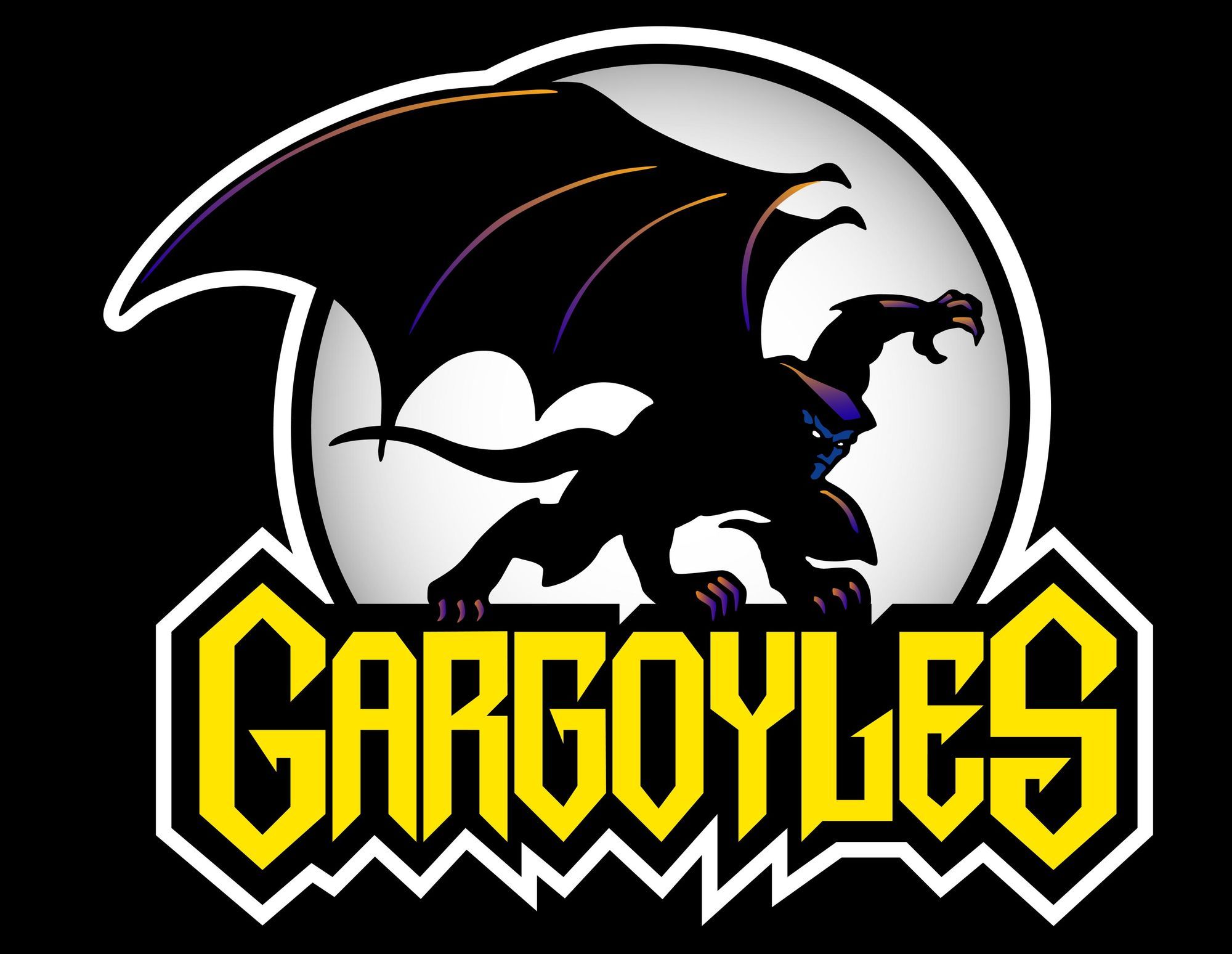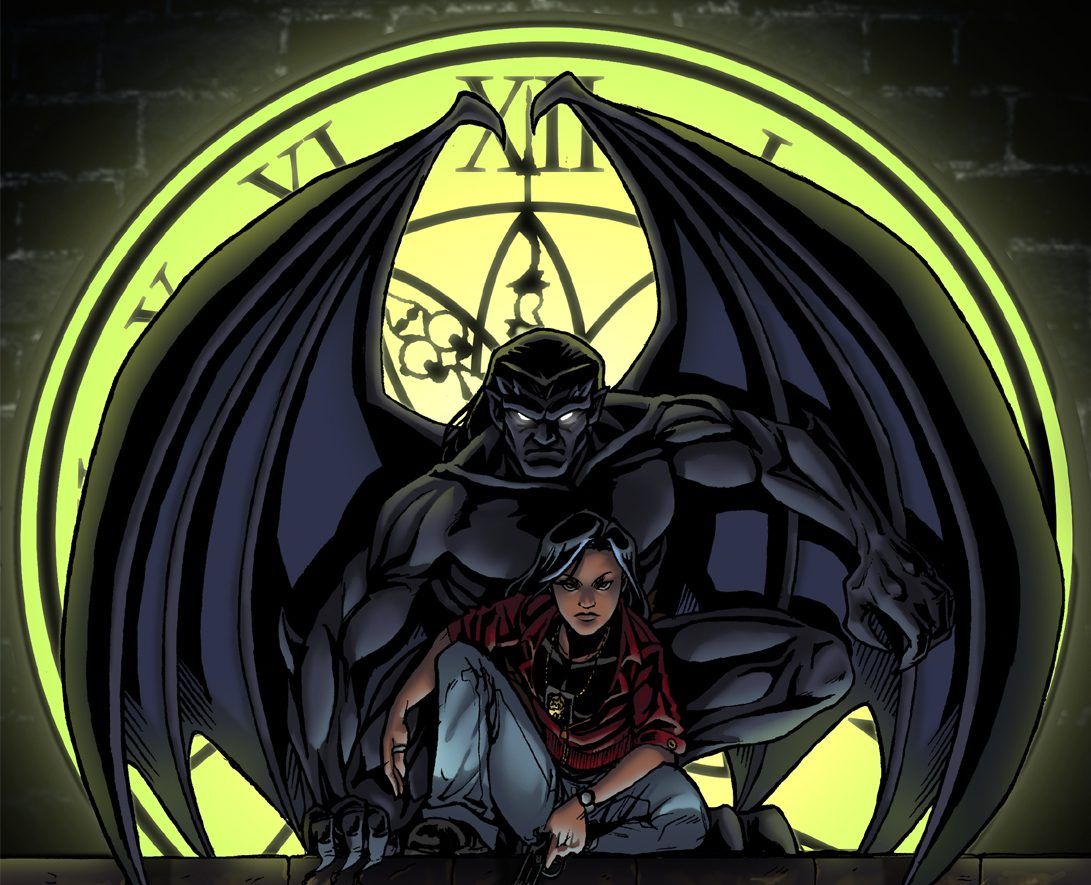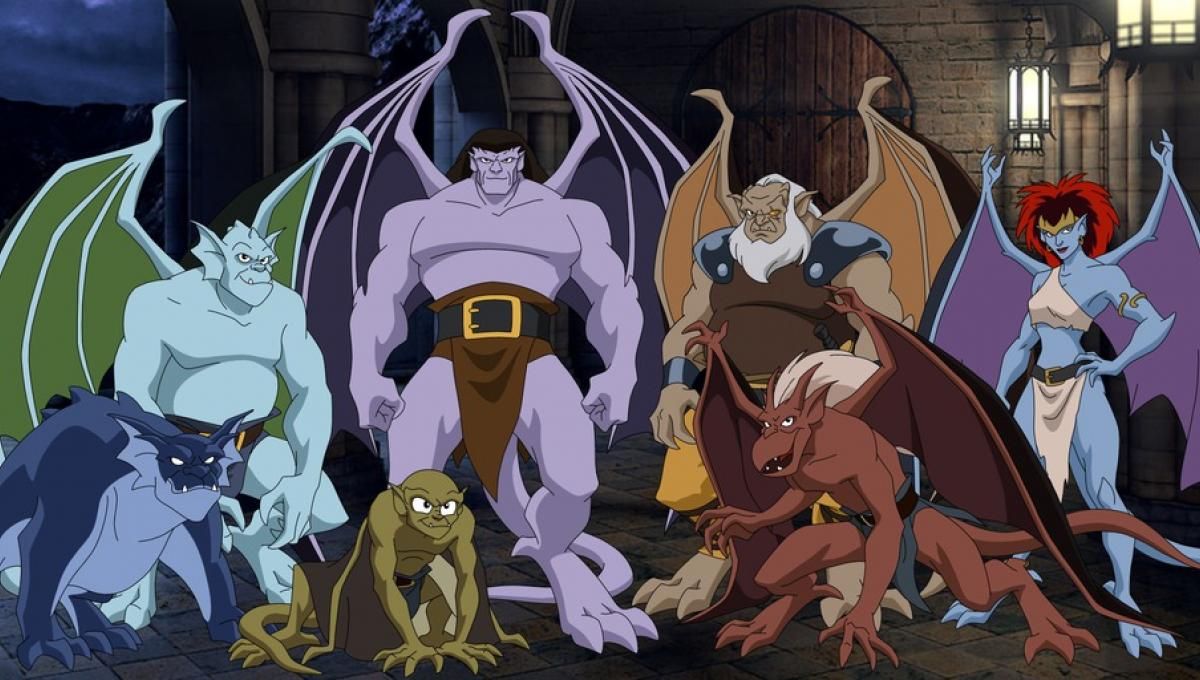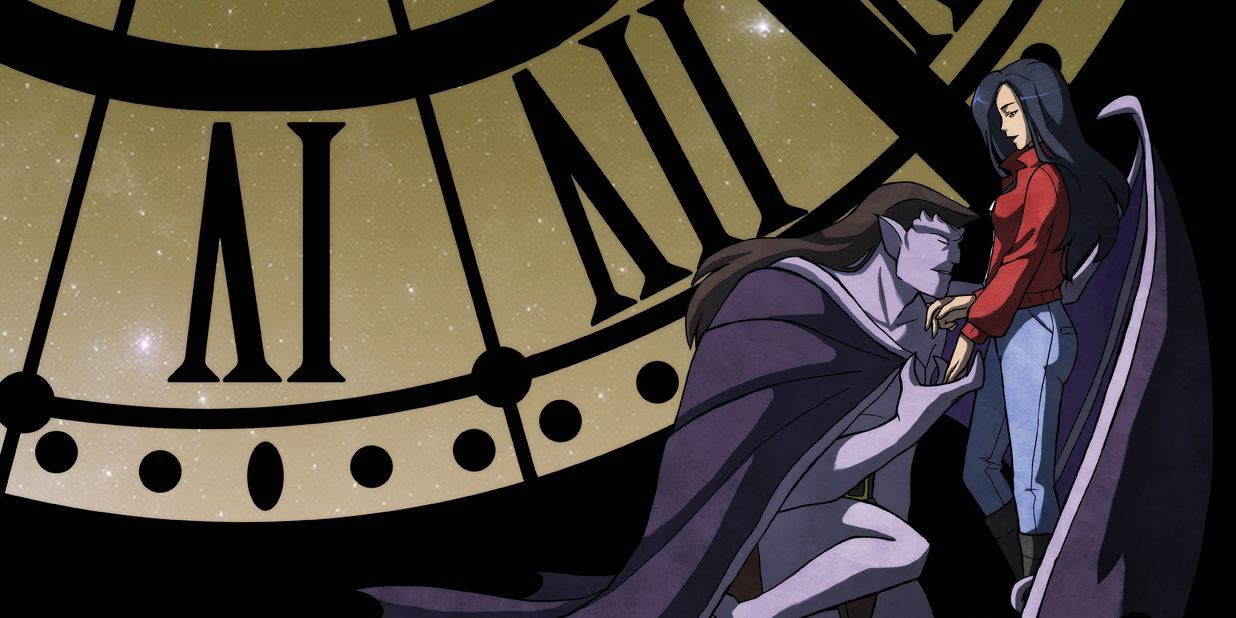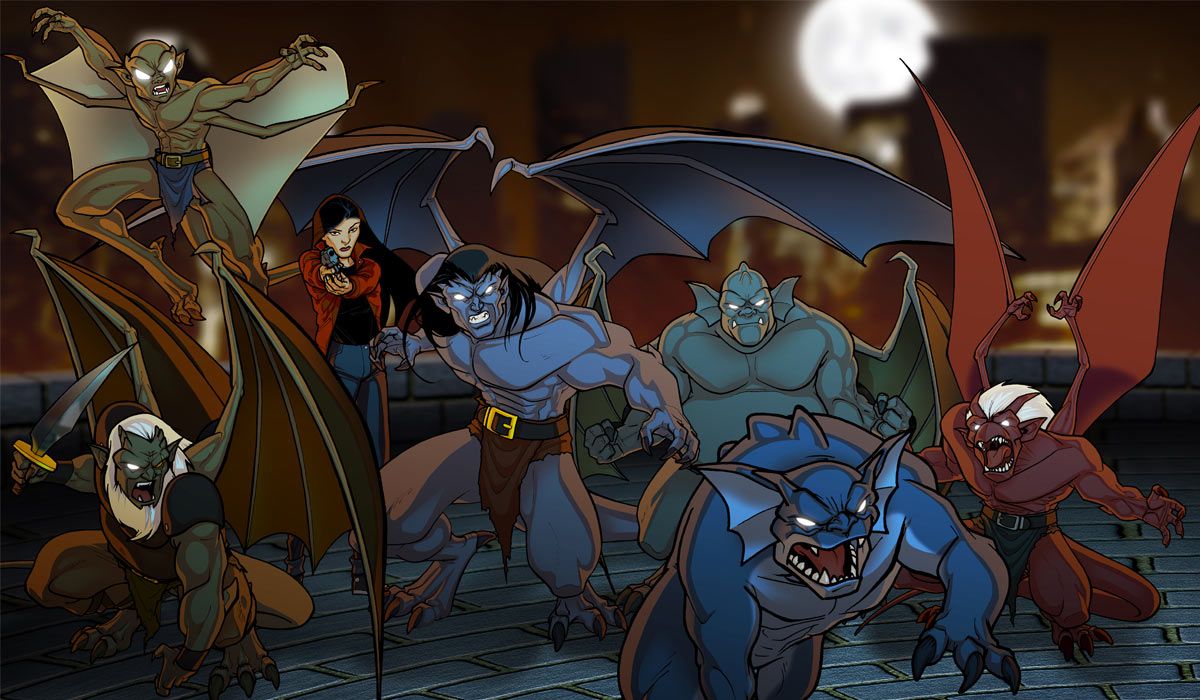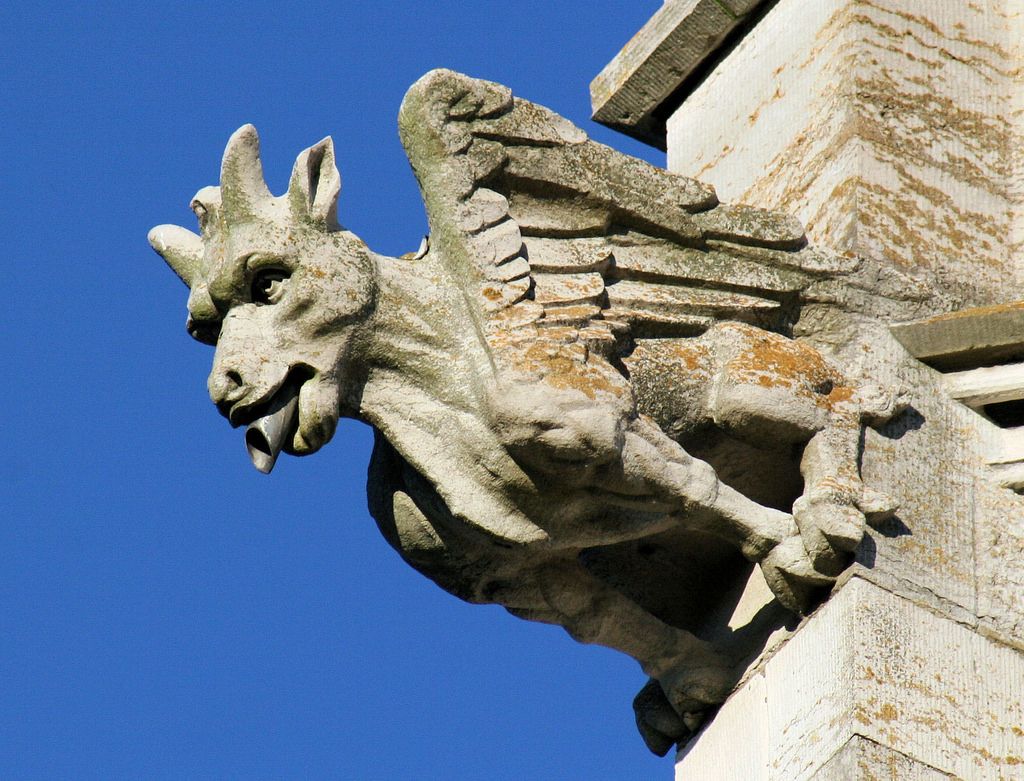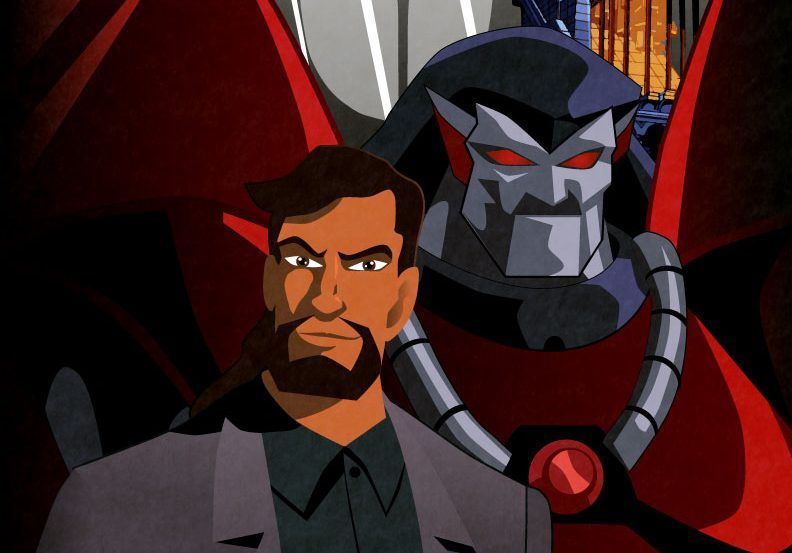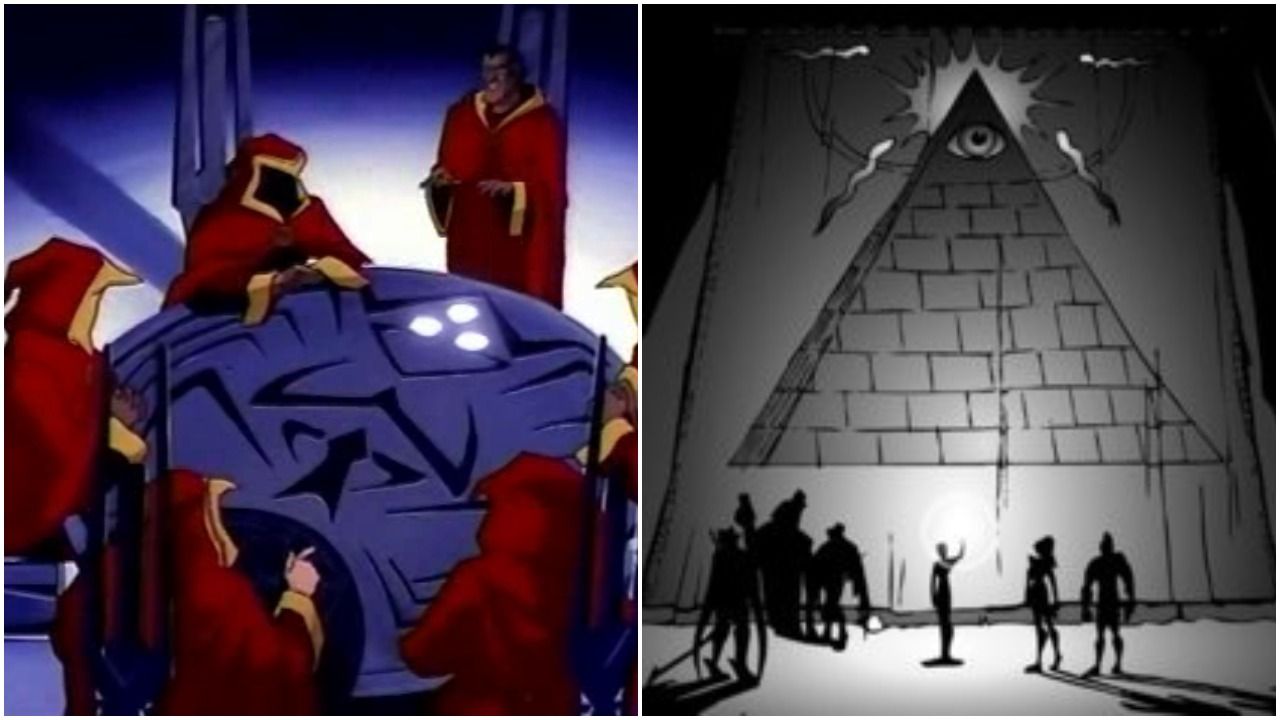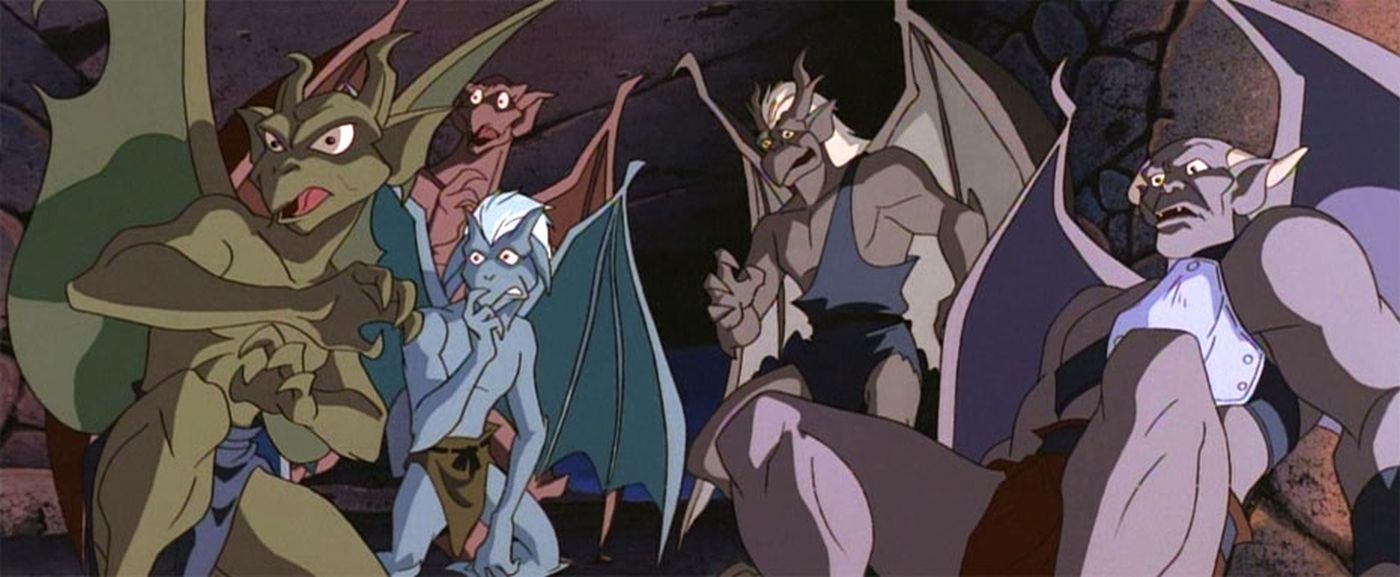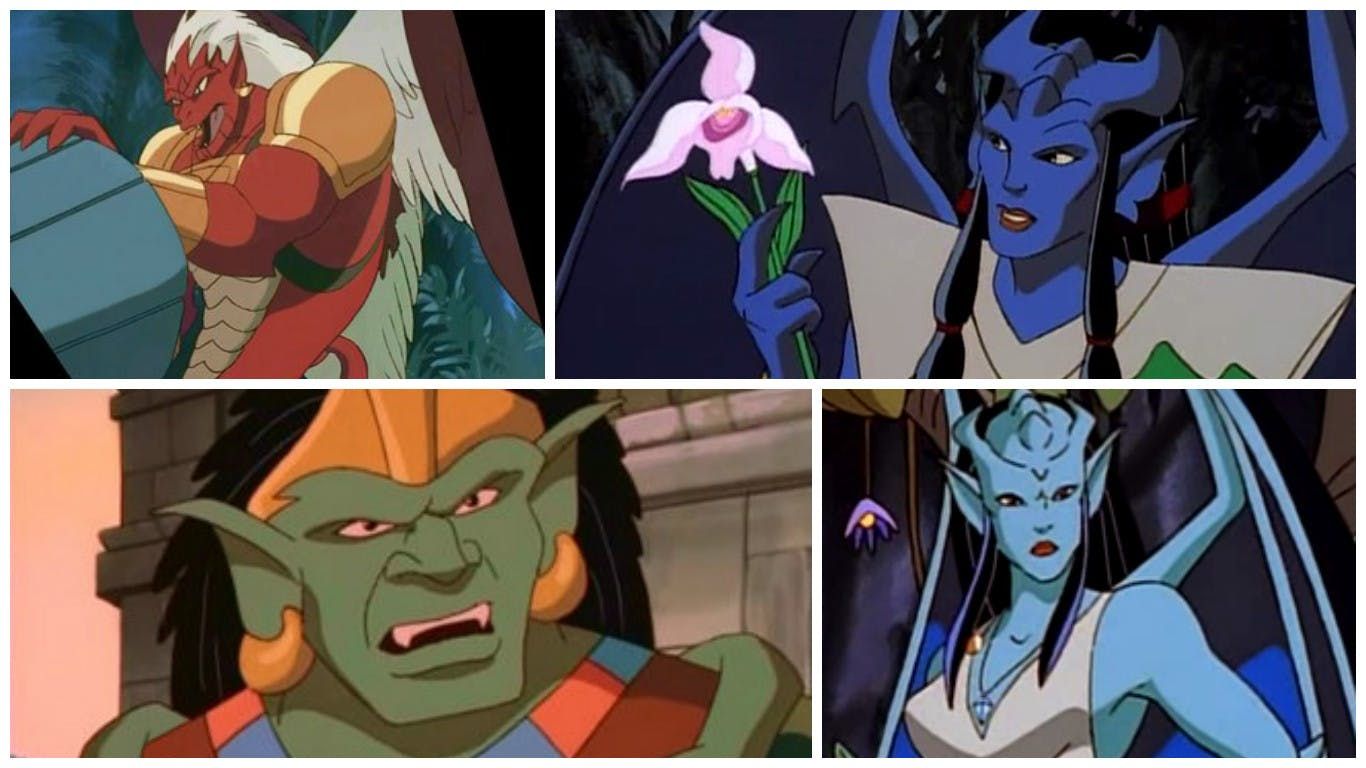Gargoyles is one of those cartoons that you've probably seen if you grew up in the 90s. The series ran from 1994 to 1997 and is fondly remembered by many, but it simply doesn't get enough credit for all it did for pop culture. Gargoyles was an absolute gem, unique among Saturday morning cartoons of the decade, It was refreshingly dark (especially for a Disney production), it was smartly-written and complex, and the characters were some of the most memorable in animation history. It had an edge to it rare to find among television shows aimed at children. The depth of its world-building and lore, with multiple gargoyle clans and ties to ancient Scotland and Arthurian legend, seamlessly blended magic and fantasy with its near-future scifi elements.
Engaging characters like the noble warrior Goliath (voiced by Keith David of They Live and The Thing fame), fearless detective Elisa Maza (voiced by A Low Down Dirty Shame and Eureka's Salli Richardson) and one of the greatest villains of all time in David Xanatos (voiced by Star Trek's Jonathan Frakes) have contributed to Gargoyle's enduring popularity. It also wasn't afraid to show violence, blood, and guns, explore Shakespearean themes, and boldly experiment with plots about alien invasions and shady conspiracies like the Illuminati.
Whether you're a die-hard Gargoyles fan or a newbie who's just curious about the classic TV series, here are 27 facts and dark secrets you didn't know about Gargoyles, one of Disney's darkest and most underrated creations.
27 A Transforming Virus
One interesting plot point in Gargoyles is the creation of the mutagenic formula, a DNA-altering virus engineered by Anton Sevarius and bankrolled by David Xanatos, who wanted to create an obedient force of gargoyles in light of his failures to control the Manhattan Clan. The virus uses DNA from animals like humans, bats, electric eels, and jungle cats, to create gargoyle-like creatures called mutates. The virus worked by injecting it into humans who then mutate into gargoyle-like creatures. Bat DNA was used to create wings on the mutates, while large cat DNA was used to increase speed and strength, and electric eel DNA to give them extra weaponry in battle.
The mutates eventually sought freedom from Xanatos and fled to the underground complex formerly owned by Cyberbiotics known as the Labyrinth. This, along with Dr. Sevarius' creation of the Goliath clone Thailog, would start a chain of events leading to the founding of the Labyrinth Clan.
26 Still Going Strong
Gargoyles originally aired from October 24, 1994, to February 15, 1997, with Frank Paur producing for Walt Disney Television Animation and Buena Vista Television. While the show was only moderately successful at the time of its airing, unlike many animations during the 90s, it did not fade into obscurity or get written off as a passing fad. In 2009, IGN ranked Gargoyles as number 45 on its list of top 100 animated series of all time, noting that it had maintained a strong cult following despite ending over a decade previously. Hollywood.com named it as one of six cartoons that should be made into movies.
After its cancellation, the show aired on Disney XD in the United States but ended its run in March of 2012. But what may surprise some long-time fans is that in some countries, Gargoyles is still running. These include Disney XD in Italy and Serbia, the Disney Channel in Serbia, and Sky Movies Disney in the United Kingdom.
25 There Were Aliens!
In a universe where magic and futuristic technology exist, there's no telling what mysteries may turn out to be real. In the case of Gargoyles, the fantasy and Arthurian legends were just the beginning: aliens are also real. In the episode, "Sentinel," the gargoyles meet Nokkar (voiced by Star Trek actor Avery Brooks), an extraterrestrial of the N'kai species who has a secret base hidden on Easter Island. According to the series lore, Nokkar helped the local people erect the famous Easter Island statue heads, known as Moai.
As if that weren't enough, there's actually a second species of alien. Nokkar was sent to Earth to guard against a possible invasion by the Space Spawn, the N'kai's archenemy. Not much is known about the Space Spawn, except that they were born "amidst the fury of an exploding star" and seem to have expanded across the galaxy.
24 Incoming Cyborg Gargoyles
David Xanatos seems to never run out of ideas in his quest to obtain a cadre of obedient gargoyles for himself. He's so dedicated to the idea that he actually creates his own cyborg gargoyles in the first season finale. With Demona's help, Xanatos obtains the remains of one of the gargoyles smashed by the Vikings during the attack on Wyvern Castle and reassembles their bodies using a combination of science and magic. The result was a gargoyle cyborg named Coldstone (voiced by Michael Dorn).
It turned out, however, that Coldstone was made from the fragments of three different gargoyles and not just one, which led to him manifesting multiple personalities. In a grand reference to Shakespeare's Othello, the three personalities are the beautiful Desdemona, the noble Othello, and the scheming Iago. Eventually, the three are separated into their own respective cyborg bodies as Coldstone (Othello), Coldsteel (Iago), and Coldfire (Desdemona).
23 Too Dark Not To Censor
In many ways, Gargoyles was ahead of its time. Unlike most Disney productions today, it wasn't afraid to venture into dark territory regarding contemporary issues. One episode was so controversial it was actually banned. The overweight and kind-hearted character Broadway (voiced by Bill Fagerbakke of Spongebob's Patrick Star fame) mostly served as a comic relief character who stayed out of the spotlight. But he took center stage in the episode "Deadly Force," where, after watching a Western movie, he steals Elisa's handgun and accidentally shoots her while playing with it. The other Gargoyles blame a local crime boss and begin to hunt down criminals who they suspect of shooting Elisa before Broadway takes responsibility in a rather heart-wrenching hospital scene.
Parental advisory groups weren't happy with the episode's depiction of a shooting, and executives pulled "Deadly Force" from reruns.
22 The Xanatos Gambit
There's simply no question that not only is billionaire industrialist David Xanatos one of the greatest villains ever portrayed in a kid’s cartoon, but also one of the best villains ever, period. The antagonist of Gargoyles has gained a reputation as a symbol for Machiavellian planning. So much so, that he actually has a type of planning named after him. The trope is called the "Xanatos Gambit," or a plan in which all possible outcomes benefit the planner. Xanatos had a highly developed charm and personality, and unlike your typical Saturday morning cartoon villain, he viewed world domination and revenge as a waste of time.
As CEO of his own company, Xanatos is regularly included in lists of the most wealthy fictional characters. Fans of Star Trek: The Next Generation probably also noticed that he is voiced to perfection by Jonathan Frakes, the actor who played Commander William T. Riker.
21 Shakespearean References
Inspirations for Gargoyles came from a variety of sources, including the Gummi Bears cartoon and The Simpsons to the TV cop drama Hill Street Blues. But one of the things that made Gargoyles feel so adult and intelligent are the references to the works of William Shakespeare. As a former English teacher, Weisman had an appreciation for the classic plays of the Bard; he even used to act in productions of Shakespeare's plays. It should come as no surprise that he inserted Shakespearean elements into his cartoon about gargoyles.
The most obvious references are the characters of Macbeth, the Weird Sisters, Oberon, Titania, and Puck, from the works Macbeth and A Midsummer Night's Dream. These influences only grew more pronounced over time. The characters of Coldstone, Coldfire, and Coldsteel were also references to the characters of Othello, Desdemona, and Iago from Shakespeare's Othello.
20 Shrouded In Darkness
As previously noted, Weisman's original vision for Gargoyles was as a comedic cartoon starring tiny gargoyles living in modern-day New York City who befriend a kindly school teacher. But Disney executives favored targeting the 13-to-16-year-old demographic, and thus, the darker and edgier Gargoyles we all know was born. And if there's one thing that's remembered about Gargoyles, it's that it was dark. Literally so: the entire series is not only one of the darkest Disney cartoons ever produced, but the lighting is straight out of a Batman comic.
Gargoyles didn't just have a dark color palette but had multi-episode storylines involving adult themes like revenge, violence, crime, greed, and abuse of power. The typical episode took place in a rather grim vision of New York City in the near-future.
19 Underappreciated
Gargoyles is remembered and beloved by many, and is often compared with another classic 1990s cartoon, Batman: The Animated Series. The similarities are obvious since both are known for being kid's shows with dark tones and mature storylines. It may also have been influenced by Weisman’s time working at DC comics before he moved on to Disney. DC Comics is known for its darker storylines, and it's likely Weisman brought some influences with him from DC, though he also noted that many episodes bore the marks of Shakespeare's twisted side. Still, comparisons of Gargoyles to the famous Batman cartoon are inevitable.
However, B:TAS creator Bruce Timm doesn't seem to be too happy with the comparison. In an interview with Timm and his animator colleague Glen Murakami, Timm reacts dismissively to the interviewer bringing up Gargoyles, stating: "Yeah, that whole premise of Gargoyles was kind of namby-pamby anyway, with all that Celtic fantasy crap."
18 Human Motives
While Gargoyles does have its share of henchman and generic thugs as antagonists, the show takes a rather nuanced approach to its numerous villains, especially when you consider most bad guys in shows for kids are one-dimensional cackling embodiments of evil. This is the case with the series' main antagonist David Xanatos, who wanted to awaken the gargoyles to help him with his business dealings, and when this failed tried to make gargoyles of his own. However, he decides to change his ways after Goliath and friends save his newborn son Alexander from Oberon.
Other villains also have character arcs and understandable (if not justifiable) motivations. The Captain of the Guard betrays Wyvern Castle to the Vikings in the first episode because he's disgusted with the way the humans treat the gargoyles, which is why Demona helps him. Demona herself is motivated by her traumatic experiences with humans and jealousy over Goliath's relationship with Elisa Maza.
17 A Different Continuation
The first thing you notice about Gargoyles second season is that it's very, very long. While the show's successful first season was a standard test run of 13 episodes, the sprawling second season lasted a whopping 52 episodes. This ambitious change in scope wasn't the only major shift in the story of Gargoyles; in fact,while the husband-and-wife team of Michael Reaves and Brynne Chandler Reaves wrote most of the first 13 episodes, during the long second season most of the creative team (producers, animators, story editors, etc.) changed.
While the first season focused on the gargoyles living in modern-day New York City and fighting against Xanatos and Demona, the second season focused on a smaller group of characters embarking on more fantasy-leaning quests on the magical island of Avalon. Season two was when the show's heavy influence from Arthurian and Celtic legend became more obvious, with characters like Merlin making an appearance.
16 Non-Canonical
If season two was a shift, the third season of Gargoyles took the show in an even more radically different direction. The show was re-branded as Gargoyles: The Goliath Chronicles and saw the story focus much more on the character of Goliath and his relationship with Elisa. It removed Xanatos as an antagonist entirely and replaced him with the Quarrymen, a group of anti-Gargoyle hooded vigilantes inspired by the Ku Klux Klan.
Unfortunately, the new crew didn't take enough time to familiarize themselves with the established Gargoyles universe, resulting in inconsistent tones, storytelling, and character development. Fans weren't happy and ratings suffered. Now airing on ABC instead of the Disney Afternoon and running in the same time slot as Power Rangers on FOX, Gargoyles was canceled after its third season. Nowadays, The Goliath Chronicles is considered something of an anomaly, and it's not considered canon by fans or creators.
15 Tackling Racism
While Gargoyles: The Goliath Chronicles certainly had its fair share of flaws, it wasn't all bad. In fact, some of its storylines were downright daring for a children's cartoon show. Following the second season finale "Hunter's Moon," the public is now aware of the Manhattan Clan's existence, and the main cast has to deal with the prejudicial attitudes of some who consider the gargoyles as dangerous monsters. This is further complicated when racist gargoyle-hunters called the Quarrymen show up, led by John Castaway (voiced by Alan Cumming), whose father was murdered by Demona.
Of course, the theme of the dangers of prejudice wasn't limited to the third season; it was there right from the beginning, as shown in the continuing conflict between Goliath's idea of protecting their adopted city of New York, and Demona's view that humans and gargoyles can never peacefully co-exist.
14 Stone By Day, Warriors By Night
Even though Gargoyles featured many supernatural and magic elements, the gargoyles themselves are not supernatural. One of their most defining characteristics is their "stone sleep," where they appear to turn to stone during the day and come alive at night. But it turns out it's more complex than that. Instead of magically transforming from stone to flesh, the "stone sleep" is really the result of biology and evolution, not magic.
When the sun rises, a gargoyle's skin is transformed into a layer of protective organic tissue resembling stone, and the gargoyle enters a period of stasis. Weisman compared the gargoyles' sleep to the bio-electricity of electric eels or the slowed metabolism of a bear or squirrel during winter hibernation. The gargoyles heal any inflicted wounds during stone sleep, and dreaming sometimes takes place. When the sun sets, the stone skin gradually gets thinner until it becomes a brittle shell and shatters as the gargoyle breaks out.
13 Biology And Breeding
Gargoyle biology is well-established in the lore of the series. For example, while gargoyles can and do eat normal food (sometimes jovially in the case of Broadway), they also replenish their energy by absorbing sunlight while they sleep during the day. Gargoyles are classified as "gargates," meaning a species that evolved before humans in prehistoric times. They live far longer than humans, and like many creatures, they breed in order to reproduce.
Instead of live birth, gargoyles hatch from eggs. The gestation period lasts for six months, but they take 10 years to hatch, and female gargoyles can only lay one egg every two decades at ages 50, 70, and 90. Gargoyles only reproduce during these seasons, which are linked to the natural biorhythms of the earth. So, gargoyles reproduce much slower than humans.
12 The Real Ones Served A Purpose
If you've ever toured an old stone building, have you ever felt something was watching you? That's because there are probably stone gargoyles around, keeping vigilant watch from atop old buildings. The real-life gargoyles of cities like New York helped inspire Weisman to come up with the idea for Gargoyles as a series, but aside from making an interesting decoration, what purpose did the stone creatures serve in real life?
Well, it turns out gargoyles serve a very important purpose in architecture. Much like modern-day gutter systems, for centuries, gargoyles were built to direct rainwater away from the sides of buildings. Stone gargoyles, sometimes called grotesques, contain spouts that prevent rain from running down the sides of buildings, eroding the mortar that holds the building together. Most feature troughs on their backs to catch water and the rain is usually directed through the open mouth of the creature.
11 Gargoyle Battle Armor
Ask anyone who watched Gargoyles what one of the coolest things about the universe was, and "Gargoyle battle armor" is likely to be one of the first mentioned. Properly called Exo-Frames, they're suits of power armor worn by humans and constructed by Xanatos Enterprises to mimic the appearance and abilities of the gargoyles. Someone wearing an Exo-Frame gains greatly increased strength, advanced weaponry, and sometimes flight. The first prototypes were known as the "Steel Clan" and didn't have humans inside, instead functioning as fully functional robot gargoyles.
Later, one custom version would be worn by Xanatos himself, enabling him to fight the gargoyles directly rather than hiring people to do it for him. Xanatos' suit, a distinctive red color, is equipped with rocket boosters for high-speed flight, a particle beam cannon in the right arm, and an electromagnetic weapon for disabling robots and machinery.
10 The Illuminati
Historically speaking, the actual Illuminati were a short-lived anti-monarchist 18th-century secret society in Bavaria that promoted Enlightenment ideals. But the name has become the subject of countless conspiracy theories about a powerful cabal called the Illuminati that manipulated world events from behind the scenes, and the Gargoyles Universe plays with this perception. David Xanatos is eventually initiated into the shadowy organization, and through him, they learn about the gargoyles and plot to hunt them down and force them to work for their nefarious purposes.
Whether a real "Illuminati" exists or not, it's surprising that a kid's show would mention the Illuminati and depict them as a malevolent force seeking to control the world. In fact, the President of the United States is shown to be under their control.
9 Diverse Gargoyle Types
Most of the Gargoyles series centers around Goliath's group, known as the "Manhattan Clan," because they live in New York. But there are many other clans of gargoyles scattered throughout the world. In season two's plot arc (unofficially called the "Avalon World Tour" by fans), the main characters travel the world and meet their gargoyle cousins while encountering dangers along the way. In Europe, the London Clan of gargoyles resemble heraldic creatures like unicorns, griffins, stags, boars, and hippogriffs. In Asia, the Ishimura Clan of Japan have differing digits on their hands and wings, and teach Bushido in an old Shinto temple.
It's also mentioned that an ancient gargoyle clan lives in Korea, and dragon-like ones are shown to reside in China. In Scotland, there's the Loch Ness Clan, which have aquatic characteristics. There's even a New Olympian Clan that live on the island of New Olympus.
8 The Mayan Clan
One of the most important was the Mayan Clan. Living in the ruins of an ancient pyramid in the forests of Guatemala, the Mayan Clan fight to protect the rainforest and guard several dozen gargoyle eggs hidden in the rookery inside their pyramid.Unlike the more humanoid Manhattan Clan, the Mayan Clan has a distinctly reptilian appearance resembling the deities of the ancient Mayans, including feathered wings and in the case of Zafiro, a snake-like body. Though they are related to the ancient Mayan civilization in the Americas, the gargoyles actually existed for a long time before humans settled in the area.
The Mayan Clan was also unique in that they possessed the ability to walk and fly during the day. The ancient humans made a pact with the gargoyles for protection, and a human wizard created four amulets, powered by the larger Sun Amulet, that allowed them to stay awake during the day and night.

